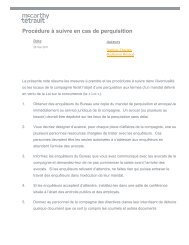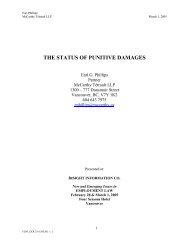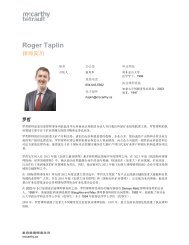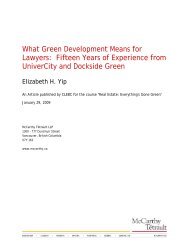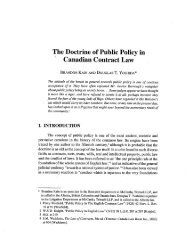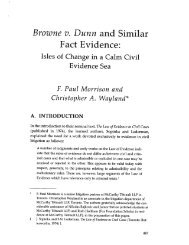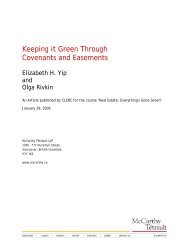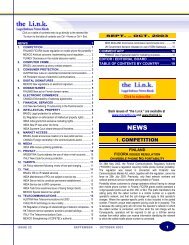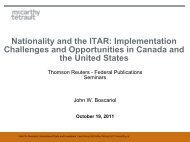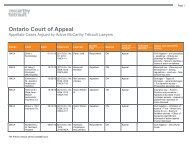Presentation Material - McCarthy Tétrault
Presentation Material - McCarthy Tétrault
Presentation Material - McCarthy Tétrault
You also want an ePaper? Increase the reach of your titles
YUMPU automatically turns print PDFs into web optimized ePapers that Google loves.
Chris Falk<br />
Stefanie Morand<br />
<strong>McCarthy</strong> Tétrault LLP<br />
PIPELINE PLANNING<br />
Background – Post-Mortem Tax Planning<br />
Various post-mortem tax planning techniques have been developed and refined over the years<br />
to relieve against double taxation that can arise under the Act as a result of the deemed<br />
disposition on death.<br />
Where an individual dies owning shares of a private corporation, 9 the shares 10 are generally<br />
deemed to be disposed of by the deceased immediately prior to death at their then FMV (in the<br />
absence of a rollover to a spouse or spouse trust). 11 If the FMV of the shares exceeds their<br />
adjusted cost base (“ACB”) 12 as is commonly the case, a capital gain will be realized in the<br />
deceased’s terminal year.<br />
As a consequence of the deemed disposition at FMV, where the shares of the private<br />
corporation are acquired by a person (e.g., the deceased’s estate 13 ), that person is deemed to<br />
have acquired the shares at a cost equal to the FMV immediately before death. However, the<br />
deemed disposition does not vary the ACB of the assets owned by the corporation or permit<br />
assets to be distributed from the corporation to its shareholders without additional shareholder<br />
level tax. Accordingly, in the absence of tax planning, the same economic gain that was taxed<br />
in the hands of the deceased may be taxed again in the hands of the corporation (and its<br />
shareholders) when the corporation’s assets are ultimately disposed of (and the net proceeds<br />
are distributed to shareholders).<br />
The two principal techniques for relieving against this form of economic double taxation are:<br />
• Capital loss carry-back planning, using the provisions of subsection 164(6) to create a<br />
loss in the deceased’s estate within the estate’s first taxation year, which capital loss the<br />
Act permits to be used to offset the capital gain arising on death; and<br />
• “Pipeline planning”, in which a new corporation is used to create a so-called “pipeline” of<br />
debt or high paid-up capital (“PUC”) shares that allows assets to be distributed to the<br />
estate (or its beneficiaries) without additional tax payable by the recipient. 14<br />
These techniques are sometimes used independently but are often combined with a view to<br />
optimizing the after-tax result.<br />
9<br />
10<br />
11<br />
12<br />
13<br />
14<br />
These comments assume, as would normally be the case, that such shares were capital property of the<br />
deceased taxpayer for purposes of the Act. Subsection 248(1) and section 54 define what constitutes a<br />
taxpayer’s “capital property”.<br />
As well as other properties owned by the deceased.<br />
Subsection 70(5) provides for the deemed disposition of capital property at FMV; subsection 70(6) generally<br />
provides for a rollover to a spouse or spouse trust. The rollovers in section 70 for family farming corporations<br />
and family fishing corporations transferred to children of a deceased are ignored for purposes of this paper.<br />
Subsection 248(1) and section 54.<br />
More precisely, the deceased’s executor or executrix in his or her capacity as executor or executrix.<br />
Pipeline planning is sometimes combined with “bump” planning. In concept, the corporation is wound-up into a<br />
new corporation and the provisions of paragraphs 88(1)(c) and (d) are relied on to increase the ACB of the<br />
corporation’s non-depreciable capital property. Alternatively, instead of a tax-deferred winding-up undertaken<br />
pursuant to subsection 88(1), an amalgamation (e.g., a short-form vertical amalgamation) under section 87 could<br />
be undertaken.<br />
560600/422632<br />
MT DOCS 11864055v1G<br />
3



